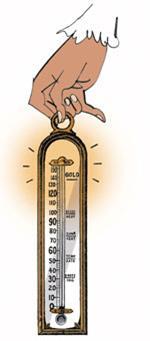Chemistry, I fear, started as a fiddle and a fraud

Chemistry, I fear, started as a fiddle and a fraud. It grew out of alchemy. Among other ambitions, alchemy hoped to transmute metals - which for financial reasons meant turning them into gold. The Roman emperor Diocletian felt that the Egyptians might be able to do this, so in AD296 he ordered the destruction of all Egyptian alchemical treatises.
If honest, those treatises will have described trickery. One trick required you to dissolve a bit of gold in mercury, giving a liquid amalgam. You put this into a furnace, and evaporated the mercury; the gold remained. You had turned one metal into another! Another trick depended on a hollow stirring rod sealed with wax. You put some gold filings in the hollow rod, and stirred a hot crucible with it. The wax melted; the gold filings fell into the crucible; once more you had made gold.
Such tricks continued for centuries - Chaucer is scornful of them in his Canterbury tales . But the trickster seldom benefited: first, he had to pay for the gold used in the trick; second, he probably set up the whole fraud to fool some watching potentate, from whom he hoped to borrow money. That potentate might seize him, and imprison him with orders to make a lot more gold - and perhaps even worse once the deceit was uncovered.
Even an originally honest alchemist would have got used to trickery. But the ’manufacture’ of gold gradually declined, since by 1650 or so, even the most gullible observer was suspicious. However, all that mixing and heating gradually built up proto-chemical knowledge, and then the alchemist and accomplished gold maker Johann Becher added a bit of new theory.
Fire is one of the most fundamental and dramatic of chemical reactions. Becher said that it gave out not merely light and heat, but also a mysterious substance called ’phlogiston’.
In retrospect, Becher’s phlogiston seems crazy even by alchemical standards. Yet it was some sort of advance, and fought its way to acceptance. Many technologists complained that in fact a burnt object gains in weight - metal burns to a ’calx’ or oxide which weighs more. Becher retorted that phlogiston could have negative weight, so that giving it out made something heavier. This bold assertion was not obviously absurd - after all, a hydrogen balloon seems to have negative weight.
Phlogiston dominated chemistry from about 1680 to 1780. Becher and his pupil Georg Stahl made it somewhat respectable; Josiah Wedgwood used it to optimise the firing process for pottery. Then, largely by the heroic work of Antoine Lavoisier, and the more general use of the chemical balance, phlogiston ceased to be credible. It gave way to that great chemical triumph, the modern theory of fire and oxygen.
I fear that Becher had been fatally infected by his alchemical tricks. He certainly falsified his age - in several official documents he gave his date of birth as 1635 rather than 1625. And his death is odd. Officially, he died suddenly in London in 1682, at the (falsified) age of 47, and was buried in the chancel of Sir Christopher Wren’s church at St James-in-the-Fields (also known as St James’s, Piccadilly). Before his ’death’, Becher had written to many German notables about jobs in Germany. And after it, his wife left for Germany, even though she had no obvious place to go to.
The scientific historian Alec Campbell has failed to find Becher’s name in the death records of St James-in-the-Fields, or in those of other churches nearby. Maybe Becher dodged his creditors by falsifying his own funeral? He might even have borrowed money from a gullible Brit for some gold-making prank.
David Jones












No comments yet